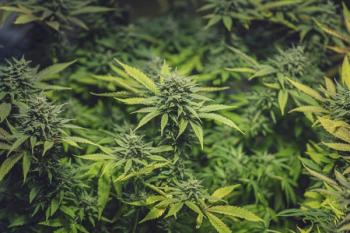
Opioid Prescribing for Cancer Care Drops
The rate of prescribing opioids among both oncologists and non-oncologists has dropped significantly in the past few years.
The rate of prescribing opioids among both oncologists and non-oncologists has dropped significantly in the past few years, raising concerns for patient care, according to a recent study.
In the wake of the US opioid epidemic, there have been major efforts to curb opioid prescribing. Researchers at Yale University School of Medicine set out to discover whether the efforts have affected prescribing among oncologists, whose patients often require opioids for symptom management.
Their findings, recently published in the
During the 5-year period, 43 states reported a decrease in opioid prescribing among oncologists. In 5 states, opioid prescribing decreased more among oncologists than non-oncologists, according to the study.
From 2013 to 2017, prescribing of gabapentin increased by 5.9% among oncologists and 23.1% among oncologists and non-oncologists, respectively. Among palliative care providers, opioid prescribing increased by 15.3%.
“Given similar declines in opioid prescribing among oncologists and non-oncologists, there is concern that opioid prescribing guidelines intended for the non-cancer population are being applied inappropriately to patients with cancer and survivors,” wrote Vikram Jairam, MD, with the department of therapeutic radiology at Yale University School of Medicine.
It is reasonable to assume that the steep drop in opioid prescribing rates among oncologists is related to the “seismic shifts in prescribing regulations and attitudes toward opioids,” wrote Andrea C. Enzinger, MD, and Alexi A. Wright, MD, MPH, both with the Dana-Farber Cancer Institute in Boston, Massachusetts , in a
“The period studied overlaps with the rapid expansion of state opioid legislation establishing prescription drug monitoring programs (PDMPs), mandating provider education, and requiring patient identification and pharmacist verification prior to opioid dispensing,” they wrote. “Prescription drug plans also began imposing limits on the quantity, dose, or duration of opioid prescriptions, further reducing prescribing.”
Writing an opioid prescription has become a complex process that involves signing controlled substance agreements, checking PDMPs, filling prior authorization paperwork, communicating with pharmacists, and “even rewriting prescriptions to comply with seemingly arbitrary and sometimes conflicting rules set by states, insurers, and pharmacies,” Enzinger and Wright wrote.
“These burdens likely disincentivized oncologists from prescribing, potentially shifting this responsibility to palliative care — as evidenced by the 15% increase in opioid prescribing observed among palliative care physicians,” they wrote. “To protect cancer patients’ access, it is critical for policy solutions to lessen — rather than add to — oncology providers’ workload.”
References
1. Jairam V, Xang, D, et al. Temporal trends in opioid prescribing patterns among oncologists in the Medicare population. Journal of the National Cancer Institute. August 12, 2020.
2. Enzinger A, Wright A. Reduced opioid prescribing by oncologists: progress made, or ground lost? Journal of the National Cancer Institute. August 12, 2020.
Newsletter
Pharmacy practice is always changing. Stay ahead of the curve with the Drug Topics newsletter and get the latest drug information, industry trends, and patient care tips.















































































































